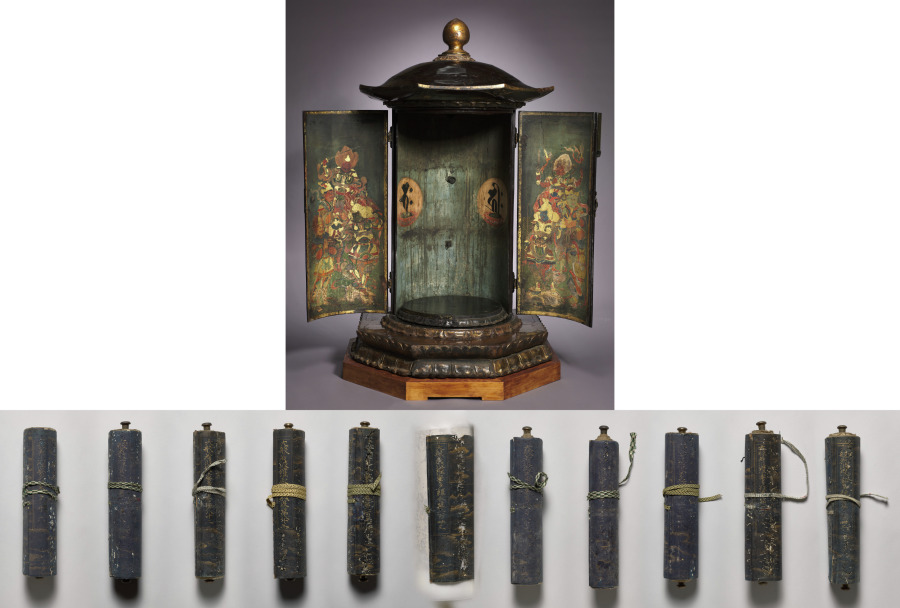| schema:description 9 | "type: Lacquer" |
| schema:description | "wall_description: This tabernacle was created to house nearly 300 sutras, or religious scrolls. On the inside of the doors, fierce figures dressed in elaborate armor and decorated with gold and silver foil served as guardians for the scrolls. On the back wall, there are two stylized Sanskrit names: Shaka, the historical Buddha, on the left, and Amida, the Buddha of the Western Paradise, on the right. The whole structure is on a base of two lotuses, symbols of purity. One of a pair of known surviving tabernacles, these incredibly fine luxury objects might have been commissioned as a way of gaining religious merit during uncertain times....(more)" |
| schema:description | "culture: Japan, Heian period (794-1185)" |
| schema:description | "collection: Japanese Art" |
| schema:description | "technique: black lacquer over a wood core with hemp cloth covering, gold paint, cut gold leaf, ink, mineral pigments, and metalwork...(more)" |
| schema:description | "creditline: John L. Severance Fund" |
| schema:description | "id: 144301" |
| schema:description | "tombstone: Buddhist Tabernacle, late 1100s. Japan, Heian period (794-1185). Black lacquer over a wood core with hemp cloth covering, gold paint, cut gold leaf, ink, mineral pigments, and metalwork; overall: 160 cm (63 in.); painted surface: 100.5 x 39 cm (39 9/16 x 15 3/8 in.). The Cleveland Museum of Art, John L. Severance Fund 1969.130...(more)" |
| schema:description | "measurements: Overall: 160 cm (63 in.); Painted surface: 100.5 x 39 cm (39 9/16 x 15 3/8 in.)" |

